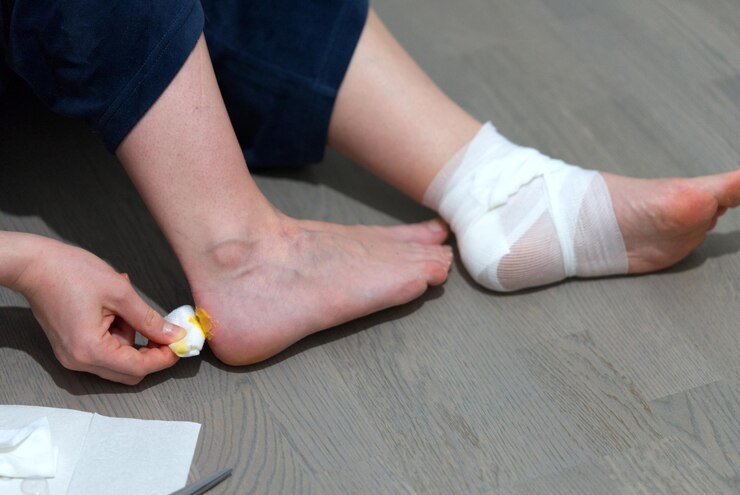Tips For Preventing Pressure Ulcers
Pressure ulcers can affect people of all ages, but as you age, your chances of suffering from them increase because you spend more time sitting or lying down. If you’re bed-bound or suffer from any movement-impairing conditions, your chances are also significantly higher of getting pressure ulcers. There can be various reasons which are responsible for causing pressure ulcers. For a bedridden elderly person, this is very common statics. Due to sleeping on the mattress for a longer time, some of the body parts come under pressure. This pressure causes pressure ulcers.
But you can prevent pressure ulcers with a few simple tips.
Checkout Four Prime Steps For Preventing Pressure Ulcers:

Learning how to spot and prevent pressure ulcers is important, and there are things you can do in all aspects of life to prevent them. Here are some tips for helping prevent pressure ulcers.
1. Use Specialty Bedding
The first line of defense against pressure ulcers is your bed and bedding. You might consider using specialty bedding or bed materials that will help prevent pressure blisters. You can get this pressure area care from medical supermarket stores. All of the mattresses for pressure ulcers take the shape of a bed. So there will be no such space where pressure points are maximum.
Common options include water or air mattress toppers and padding for areas of the body that get the most pressure, like the heels of the feet. You can buy cushion for pressure ulcers and use them. It minimizes the chances of ulcers.
What materials you use is often a process of trial and error as you work to find the materials that are most comfortable for the patient while providing adequate additional padding. A good start is to offer more soft pillows that your patient can use around their body.
2. Check Over Your Body Daily
Pressure ulcers can develop very quickly, sometimes as quickly as just a few hours. The first line of defense against pressure ulcers is to check over the body frequently for any signs and symptoms of pressure ulcers.
You can do this for your patient, or you can ask them to do it themselves if they’re able. If you both do these checks, you’ll have a better chance of spotting symptoms before they get worse.
For very early signs, look for signs of the skin becoming discolored. Pale skin might appear red and patchy, while darker skin might present with purple or blue patches. The people who use the boots in the winter they are more prone to these pressure ulcers. There are boots for pressure ulcers that have special cushions.
These are early warning signs and should be taken seriously. If you miss this initial stage, you might spot open wounds or blisters, or as the pressure ulcer gets worse, you might see deep wounds.
3. Manage Your Chronic Conditions
If your patient suffers from any chronic conditions, specifically those that affect the cardiovascular system, they are at a higher risk of developing pressure ulcers. It’s important that you manage your chronic health conditions properly.
Many types of air mattresses for pressure ulcers are available on the market. But before buying anything, always consult your doctor first. Hence they will give you ideas about your chronic conditions and guide it to buy a suitable mattress for you.
4. Keep Your Skin Clean and Dry
In general, you should keep your patient’s skin clean and dry, paying particular attention to folds of the skin and the perineal area where sweat and moisture are often present.
Something to be aware of, too, is that a common cause of pressure ulcers is incontinence in seniors. The acids and enzymes in bowel movements or urine that is in contact with the skin for extended periods can cause skin excoriation and degradation much faster than you expect.
This, in combination with a lack of mobility, can be a common cause of pressure ulcers. If your patient suffers from incontinence, it’s a good idea to use a barrier cream and reposition them more frequently.
Bottomline:
Pressure ulcers are unwelcome because not only can they be painful, but they also present a significant risk of infection and related health conditions. Preventing and treating pressure ulcers is, therefore, an incredibly important part of caring for your patients. Pressure ulcers are very painful, and if you keep them unattained, they can increase, and slowly, the size of the shore will going to increase. If this happens with any elderly person, they need immediate attention. First regular cleaning and treatment are a must. For severe cases, regular medication and dressing are required. First, you have to identify are reasons for it. Then start the treatments.
Read Also:








